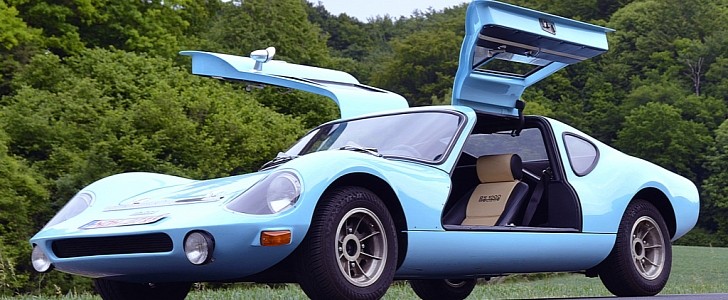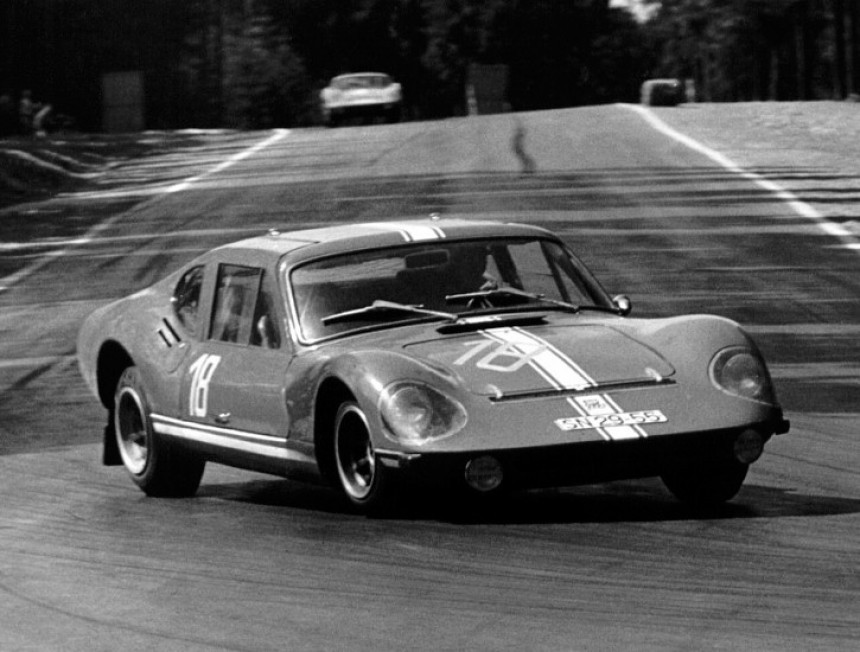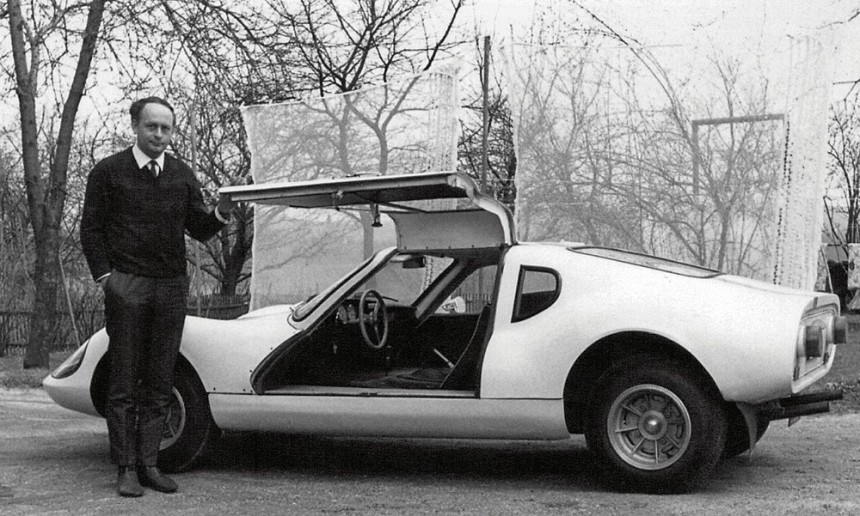Over a decade ago, in 2009, we had the chance to see the Melkus RS 2000. It was trying to become what its predecessor, the Melkus RS 1000, couldn’t. Unfortunately, the modern car only got to see the light of day for a limited run, based on the underpinnings of a Lotus Elise. But here’s its predecessor’s fascinating story.
Officially known as the German Democratic Republic, this new country was at the time transparently under Soviet control. After World War II, the laws of the land had changed. The new government wanted strict control and they had enacted a new rule: only Sachsenring and Wartburg could make cars. That did not bode well with Heinz Melkus. Born in Dresden, he often dreamed about racing and winning. These thoughts would not let go of him, so he decided to do something about it.
He joined international events with extraordinarily little support from his country and had to work more than its peers just to arrive at a race. Entering one was a different story.
After careful planning and a lot of testing, he decided it’s time to join the big boys world and developed what was going to become East Germany’s fist Formula Junior race car. It had a two-stroke engine, a deafening exhaust and managed to hold itself together at some international events.
Unfortunately for Heinz Melkus, the gate to the West was closed in 1961 with the appearance of the Berlin Wall. He was only allowed to visit other countries from the Soviet bloc. He managed to participate in some races in former Yugoslavia, where he saw the Lotus Elan. Having nothing else to build on, Melkus chose the Wartburg 353 as his basis, but quickly gave up on it. At that time, Ford GT40s and Porsche 904s had started to emerge, so he planned on making yet another, more stylish, car.
Together with his sons and help from Stefan Scheitler, Melkus built what was going to become the Melkus RS 1000 – a statement of courage and passion. Design work was sloppy at first, but after some testing done as secretly as possible, Heinz Melkus and his team decided on installing roof-hinged gullwing doors on the model. The maximum height of the car was only about one meter, so these doors made the most sense for parking and accessing garages. This was also confirmed by the owner of the last car produced, as he drove it for a TV interview.
The German got to the point where he was confident about mass production, so he requested the approval of the state, but official inspectors demanded changes. The team delivered everything they requested, and the production started in 1970 in what today is called Chemnitz. The car ended up as being four times more expensive than your average Trabant and owners were forced to register in an organization that told them to race at least twice per year. Nonetheless, people liked it.
The car had the looks, but it lacked any kind of performance or luxury. It was a two-stroke engine good-looking machine that had a lot of communist Wartburg parts under its skin. Nonetheless, some models were able to achieve speeds of up to 210 kph (130 mph). Owners took their cars and secretly swapped the engine with more potent ones. Even the founder tried to couple two Wartburg engines at one point! The team even considered using a Tatra V8 for a high-performance Melkus RS 1000.
Unfortunately for the customers, a service network was never established. This meant they had to mend their cars themselves or send them to Chemnitz. After the selling of Melkus’ headquarters, a new BMW dealership kept servicing some of the cars. Sadly, today that dealership is closed too.
It took Heinz Melkus nine whole years to build 101 cars. But he and his team did their best.
There were attempts at keeping his legacy alive, but Heinz did not live to see them. Regretfully, after the Lotus Elise-based Melkus RS2000 didn’t manage to attract much attention, any new investment stopped and bankruptcy took over. The company tried to make its upgraded and updated car popular, but the GT, GTS and Black Edition iterations of the RS2000 weren’t expansion catalysts. In 2012, it stopped operating.
Now the Melkus RS 1000 – the wannabe Ferrari of the East - will live on as a testament of courage and stubbornness. It is proof that when you want to do something for yourself and your peers, with enough determination and a good team, you will find a way.
He joined international events with extraordinarily little support from his country and had to work more than its peers just to arrive at a race. Entering one was a different story.
Creativity and planning for trouble pays off
Heinz Melkus overcame his anger and learned how to treat the Eastern officials. He, as Matthias Kierse points out, defined racing as a “a socially important, useful and necessary activity.” They listened to him!After careful planning and a lot of testing, he decided it’s time to join the big boys world and developed what was going to become East Germany’s fist Formula Junior race car. It had a two-stroke engine, a deafening exhaust and managed to hold itself together at some international events.
Unfortunately for Heinz Melkus, the gate to the West was closed in 1961 with the appearance of the Berlin Wall. He was only allowed to visit other countries from the Soviet bloc. He managed to participate in some races in former Yugoslavia, where he saw the Lotus Elan. Having nothing else to build on, Melkus chose the Wartburg 353 as his basis, but quickly gave up on it. At that time, Ford GT40s and Porsche 904s had started to emerge, so he planned on making yet another, more stylish, car.
Together with his sons and help from Stefan Scheitler, Melkus built what was going to become the Melkus RS 1000 – a statement of courage and passion. Design work was sloppy at first, but after some testing done as secretly as possible, Heinz Melkus and his team decided on installing roof-hinged gullwing doors on the model. The maximum height of the car was only about one meter, so these doors made the most sense for parking and accessing garages. This was also confirmed by the owner of the last car produced, as he drove it for a TV interview.
Try, try, try and then try some more
Even thought it looked like it came straight from the hands of Italians, the car had a rough suspension, there was no sound deadening, it was hard to control in unfriendly weather and spare parts were hard to find. It weighed a little over 680 kg (1,500 pounds). In its own way, it had character!The car had the looks, but it lacked any kind of performance or luxury. It was a two-stroke engine good-looking machine that had a lot of communist Wartburg parts under its skin. Nonetheless, some models were able to achieve speeds of up to 210 kph (130 mph). Owners took their cars and secretly swapped the engine with more potent ones. Even the founder tried to couple two Wartburg engines at one point! The team even considered using a Tatra V8 for a high-performance Melkus RS 1000.
It took Heinz Melkus nine whole years to build 101 cars. But he and his team did their best.
There were attempts at keeping his legacy alive, but Heinz did not live to see them. Regretfully, after the Lotus Elise-based Melkus RS2000 didn’t manage to attract much attention, any new investment stopped and bankruptcy took over. The company tried to make its upgraded and updated car popular, but the GT, GTS and Black Edition iterations of the RS2000 weren’t expansion catalysts. In 2012, it stopped operating.
Now the Melkus RS 1000 – the wannabe Ferrari of the East - will live on as a testament of courage and stubbornness. It is proof that when you want to do something for yourself and your peers, with enough determination and a good team, you will find a way.












